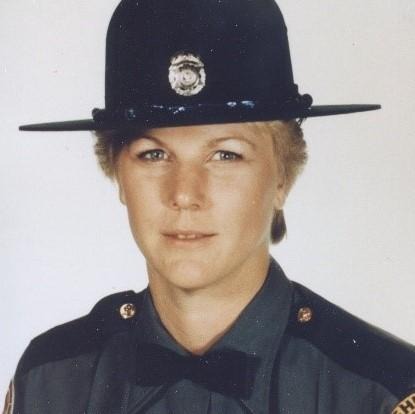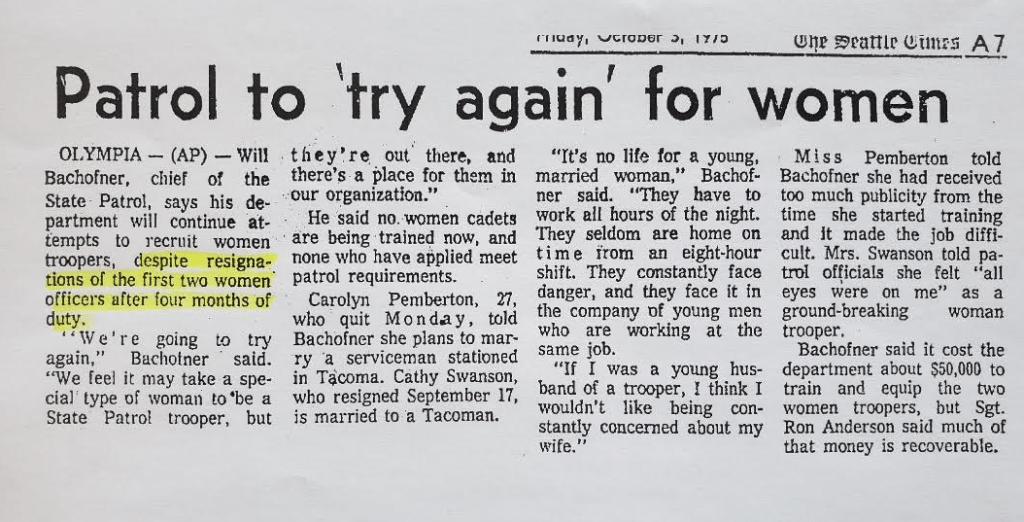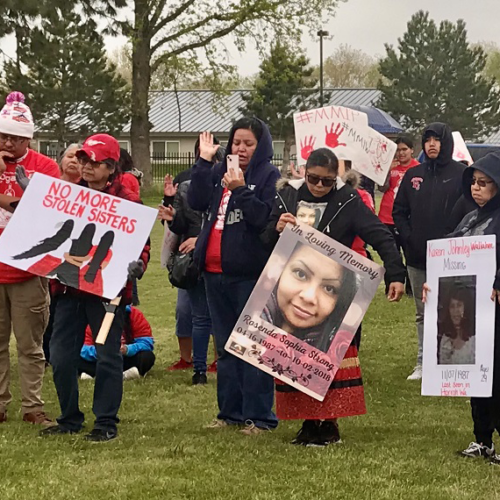
Killed In The Line Of Duty, Washington State Patrol Remembers Glenda Thomas 36 Years Later
READ ON
It was the Friday before Memorial Day weekend 36 years ago and Washington State Patrol Trooper Glenda Thomas was patrolling I-5 through Seattle.
A call came in of a two-car crash at the NE 50th exit to the University District. Thomas responded.
As the 29-year-old trooper stood by the side of the busy freeway investigating the crash, another car plowed into the back of one of the vehicles involved in the original collision. The force pushed that car into a third vehicle pinning Thomas between the two cars. She later died at Harborview Medical Center.
Thomas was the first female Washington State Patrol trooper to die in the line of duty. She had been on the job just six months. She left behind two young children.
The Washington State Patrol (WSP) is remembering Thomas’ May 24, 1985 death this week as part of its Centennial Commemoration. Beginning last September, the agency launched a year-long effort to honor all 31 officers who have died in the line of duty since the agency was founded in 1921.
The first was Patrolman Vernon Fortin who was killed in a motorcycle crash in 1923. The most recent was Trooper Justin Schaffer who was run down last year while deploying spike strips to stop a fleeing car.
Besides Thomas, only one other female trooper has died in the line of duty. In February, the patrol determined that the 2018 death of Trooper S. Renee Padgett due to cancer was related to her extensive work policing illegal wrecking yards, which often brought her into contact with hazardous substances.
Earlier this month, Padgett’s name was added to the National Law Enforcement Officers Memorial in Washington, D.C.
As the patrol remembers its fallen officers and celebrates its 100-year history, Chief John Batiste recently signed onto the 30X30 Initiative, a national effort that aims to increase the percentage of women in law enforcement to 30 percent by 2030. The Seattle Police Department has also joined the effort.
“One of our primary centennial goals is making the agency much more reflective of the public we serve in our 2nd century of service,” wrote Chris Loftis, the patrol’s communications director, in an email.
But making good on that pledge won’t be easy. Today, women make up just 10 percent of the sworn officers in the patrol — up from 7 percent a decade ago.
When Thomas joined the patrol in December 1984, she was one of the early female pioneers. A decade earlier, the agency had no women troopers. Even after women started wearing the badge, it wasn’t easy. The first two women hired, Cathy Swanson and Carol Pemberton, quit within four months, according to a WSP history.
“The discrimination they faced did not reflect well on an agency or the law enforcement industry as a whole,” the history said.

An Associated Press story from 1975 covered the challenge of recruiting and retaining women state troopers. CREDIT: WSP
An Associated Press (AP) article from the time quoted then-chief Will Bachofner vowing to try again to recruit women to the agency. In a statement reflective of the conventional thinking at the time, he also said it would take a “special type of woman to be a State Patrol trooper.”
“It’s no life for a young, married woman,” he told the AP at the time. “If I was a young husband of a trooper, I think I wouldn’t like being constantly concerned about my wife.”
In the intervening decades, WSP leaders have struggled to diversify the patrol’s largely white, male trooper ranks. As of 2020, just 2.4 percent of the commissioned staff were Black and 4.5 percent were Hispanic.
In 2019, the agency’s first African American woman captain, Captain Monica Alexander, abruptly retired. Following her departure, Alexander said she felt like she had “plateaued” and there was nowhere else for her to go.
“I love the State Patrol,” Alexander said at the time. “But that does not mean we can’t improve, that does not mean that we can’t take a deeper dive into lifting up women and lifting up minorities in that agency.”
Batiste, the chief, who’s also Black, didn’t disagree. In an interview following Alexander’s departure, he said the fact that only one African American woman had reached the rank of captain “tells us we have a lot of room for improvement.”
When Alexander was hired in 1996, she was the fourth Black woman trooper and the only one serving in the agency at the time. Throughout her career she was celebrated as the first African American woman sergeant, lieutenant and eventually captain in the agency’s history.
Alexander is now the interim executive director at the Criminal Justice Training Center, the state’s police academy.
In 2020, the patrol created an Office of Diversity, Equity and Inclusion (DEI) and has since developed a DEI recruitment and retention plan.
The effort comes amid national calls to reform policing and diversify the ranks of police officers.
Related Stories:

A year after two people died in a shooting at the Gorge Amphitheatre, two investigations into what happened at the Beyond Wonderland festival are still ongoing
Drum and bass artist Sub Focus lays down some tracks at the Gorge Amphitheatre in George, Washington, after the shooting at the Beyond Wonderland festival on June 17, 2023. (Credit:

AMBER Alert canceled for Tri-Cities boy, double murder suspect self-inflicts gunshot after police pursuit
Updated at 4 p.m.: The manhunt for Elias Huizar is over. The missing boy was not harmed, according to police. Investigators say Huizar shot himself after a police pursuit in

Cantwell dice que Washington necesita más recursos para enfrentar crisis de MMIP
En una conferencia de prensa realizada en el Seattle Indian Health Board, dirigentes tribales, familiares de personas desaparecidas y la senadora estadounidense Maria Cantwell (D-Washington) afirmaron que se necesitan más recursos federales para abordar la crisis de las personas indígenas desaparecidas y asesinadas en el estado de Washington. La conferencia tuvo lugar el 5 de mayo, Día Nacional de Concientización sobre Personas Indígenas Desaparecidas o Asesinadas (MMIP).















